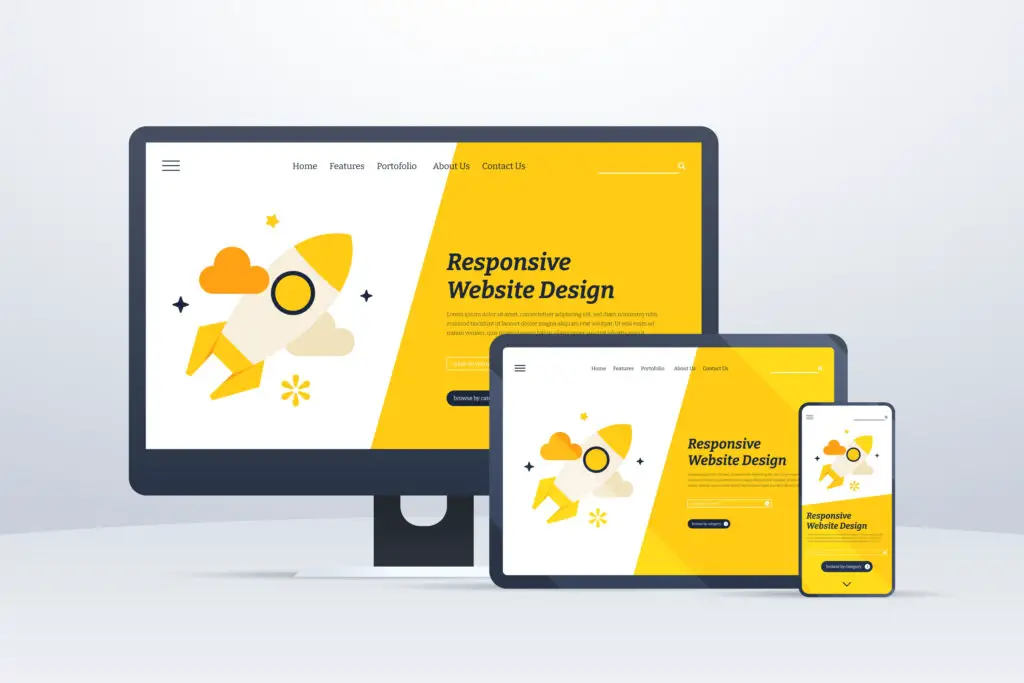A company’s website and online presence are the main avenues for communicating with clients and nurturing lasting relationships. However, many businesses still rely on outdated platforms and strategies that sabotage customer experience and engagement.

With customers expecting 24/7 access to support, the quality of your website and online networks reflects the quality of your customer service. Subpar digital experiences due to outdated technology or poor integration actively damage perception and fail to meet modern demands.
The issues mentioned above are things you’d never want to encounter.
Therefore, you must strive to improve your communication channels through digital upgrades. Utilize customer relationship manager (CRM) software and invest in robust IT support to meet modern demands. The key is leveraging technology to put customers first. But how will you attain that goal? Let’s jump into the details:
1. An up-to-date, mobile-friendly website
Your website is likely the first place a potential customer will learn about your business, products, or services. Their experience here shapes their entire perception and guides purchasing decisions.
An outdated, slow-loading website cluttered with technical glitches or lacking mobile optimization severely damages potential leads, conversions, and revenue. But what does this have to do with customer communication? Everything!
Prioritizing core website infrastructure and performance removes communication friction to serve customers better on their terms. A modern, mobile-friendly website meets users wherever they are and makes it easier for them to access solutions on your site.
Integrate live chat software to provide website visitors instant access to support right where and when they need it. Chatbots similarly offer 24/7 automated assistance via conversational interfaces based on relevant keywords and scenarios. However, they still lack human judgment. Balance both or A/B test chatbots versus live chat to determine what best alleviates customer friction per your audience.
2. Integration with CRM software
To truly enhance customer communication, businesses need a consolidated, 360-degree view of all customer interactions regardless of department or channel. CRM software centralizes all data, from sales inquiries to support tickets and email campaigns, into unified profiles tied to everyone.
This single source of truth establishes continuity in the customer journey by preventing siloed communication across teams. Employees gain clear visibility into the contacts, conversations, and context to better assist customers.
Close integration between your website and CRM platform also updates customer profiles in real-time with critical digital insights such as online behaviors, clicks, and feedback. Your marketing automation then segments audiences and personalizes engagement through this intelligence.
Maybe a customer downloaded an eBook on a specific product line or abandoned a certain checkout flow – that activity now informs the next steps. CRM tracking also identifies upsell opportunities based on interest or triggers proactive support if common pain points appear.
Additionally, online forums on your website like ‘Request a Quote’ or ‘Contact Sales’ should connect directly with corresponding CRM workflows to advance the relationship. Any exchanges via live chat or chatbots similarly sync conversations back to centralized profiles. The result is customers feel truly known because context from previous interactions guides current ones in a continuous loop, especially with handoffs between departments.
Done right, CRM integration facilitates the customer communication your teams need to drive loyalty and revenue. It eliminates frustrating repetitions for customers by empowering employees through shared insights that map to individualized journeys. It enables personalization powered by analytics to nurture relationships over time based on where that specific customer stands today.
3. Robust self-service support resources
Your website serves as the ultimate self-service hub for enabling customers to independently find answers before ever having to contact live support. Robust resources devoted to self-help can significantly improve communication while alleviating manual inquiries.
Of course, FAQ pages remain a go-to for surfacing common questions and clarity. Ensure you cover the critical product, service, account, and troubleshooting categories specific to your offer. Include easy-to-scan bulleted answers rather than paragraphs for skimmability. Allow for keyword searches to further pinpoint relevancy.
Also, expand beyond FAQs through comprehensive knowledge bases detailing your offerings, policies, how-tos, fixes for errors, and more. You can do this by breaking down topics into subsections with snippets and graphics to simplify complex information.
Employ embedded videos directly showing customers exactly how to perform tasks for added visual guidance. While at it, offer step-by-step articles outlining workflows from multiple entry points. Information architecture is just as crucial as quality content itself for actual findability.
Community forums also enable customer-to-customer conversations for sharing advice beyond official documentation. These peer perspectives provide social proof and reassurance for overcoming roadblocks. Maintain active moderation and jump in where necessary to lend staff assistance.
The goal of self-service is to reduce repetitive contacts demanding one-to-one support. Empower customers to tap into these always-available resources right on your site during the natural course of their journey. Proactively point them to Help Center articles via chatbots if detecting issues. The more their needs are met autonomously, the better trust and loyalty build. And your team can then deliver targeted human guidance at higher complexity levels when self-help hits its limit.
4. Social media presence
A strong presence across key social media platforms is mandatory for communicating with today’s always-connected audiences. This shouldn’t come as a surprise when there are currently 4.2 billion active users on these virtual venues.
The likes of Facebook, Instagram, Twitter, and LinkedIn allow for personalized, transparent conversations that build brand affinity. While your website may function as the digital hub for transactions and support, social media facilitates relationship-building by putting a human face on your business.
Each platform boasts unique users and usage behaviors based on content types, demographics, post frequencies, and more. Conduct social listening to determine where your audiences are most active to inform your channel strategies. Meet them on their native networks through tailored content and engagement catered to each community.
For example, visual platforms like Instagram and Facebook suit creative imagery, stories, and videos that showcase your culture. Twitter is ideal for driving awareness through shareable bite-sized updates. LinkedIn enables thought leadership by educating professional audiences through long-form posts.
Maintaining responsive presences that foster dialogue is key regardless of differences across networks. Proactively seek out discussions involving your brand to resolve issues, provide assistance, and turn detractors into promoters. Share user-generated content that brings value. Run contests and exclusive promotions to incentivize community activity through likes, shares, and mentions. And never underestimate the power of social listening – let conversations guide your content roadmaps to ensure relevancy.
With social media enabling more direct, unfiltered lines to customers, your efforts demonstrate commitment to building authentic relationships, not just driving transactions. The customer intelligence gained also loops back to inform product development and digital experiences across channels. Wherever audiences already connect and communicate today is where your brand needs to engage in this era.
Conclusion
Delivering exceptional digital experiences is now mandatory for earning customer loyalty in a highly competitive, on-demand business landscape. While legacy platforms and disjointed strategies erode engagement over time, leveraging modern solutions fosters meaningful, lasting relationships. By providing mobile-friendly access, responsive assistance, and personalized guidance around the clock, you transform how audiences interact with and perceive your brand on a scale. The bottom line is that technology has reshaped consumer expectations, and keeping pace is key to driving satisfaction, advocacy, and revenue.









0 Comments